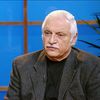"The surface of the Earth is the shore of the cosmic ocean. On this shore, we've learned most of what we know. Recently, we've waded a little way out, maybe ankle-deep, and the water seems inviting. Some part of our being knows this is where we came from. We long to return, and we can, because the cosmos is also within us. We're made of star stuff. We are a way for the cosmos to know itself."
--Carl Sagan, Cosmos
Several weeks ago I had the opportunity to attend "A Celebration of Carl Sagan," which was hosted at the Library of Congress in Washington, D.C. The event was convened to recognize the donation of the Seth MacFarlane Collection of Carl Sagan and Ann Druyan Archive to the Library. This remarkable collection comprises 798 boxes of thousands of Sagan's documents, including everything from doodles and drawings to to-do lists and a handwritten note from Sagan to President Jimmy Carter. It was a magnificent celebration of Sagan's legacy as an individual who combined excellence in science with a marvelous and uncanny ability to bring the mysteries and revelations of science to the public in an informative and captivating manner through his writings, speeches, and, importantly, the legendary television series Cosmos.
The Council of Scientific Society Presidents has previously established the Carl Sagan Award to recognize the importance of Sagan's legacy as a communicator of science for the public understanding of science. This award is given to scientists who combine excellence in research and teaching with the unique ability to present science to the public in a manner that imparts knowledge and perspective on key scientific issues of our time. The award was first presented in 1993 to Sagan himself and was most recently presented to Bassam Shakashiri, recent president of the American Chemical Society.
Today we have a daily influx of news and commentaries raining down upon us 24/7 from our radios, televisions, and a myriad of websites with information and disinformation on everything from climate change theories to herbal cures from cancer. And expectations about what scientists actually know and understand or can predict with accuracy often comes into question. For example, not long ago, a group of Italian scientists was taken to trial and found guilty of manslaughter for failing to accurately predict a deadly earthquake that struck an area of Italy. The charge was that the scientists gave inaccurate and incomplete information relative to smaller tremors before that April 2009 quake. There was a good chance that these scientists could have served time in prison for not doing something that it has proven almost impossible to do.
Perhaps an argument could be made that the scientists might have brought it upon themselves by not clearly and articulately discussing the strengths and limitations of outcomes of research findings when talking with non-scientists, and also thinking through how a press release might best happen. In this age of instantaneous information, perhaps information is publicly discussed outside scientific circles too soon, and the borders of fact, supposition, and probability become fuzzy.
A more recent example of poor information being shared with the public can be found in contamination resulting from a recent chemical spill in a West Virginia river. The chemical, 4-methylcyclohexane methanol, is used in the processing of coal, and officials noted publicly that they found little information about potential toxic effects. Virtually simultaneously, a spokesman for the state's Department of Environmental Protection noted publicly, in CNN's words, "The chemical, 4-Methylcyclohexane Methanol, is not toxic but is harmful if swallowed." I am pretty sure that I know what that means, but I suspect that many individuals would justifiably see this as a mixed set of messages and really wonder what "it's not toxic, but don't drink the water" means.
Presentation of science and science-related issues to the public is an art form that is not intuitive to many scientists. Too much jargon, too much detail (or, often, not enough detail), and not really knowing your audience are a few of the most common challenges. So too is a quick, not-well-thought-out response to a news reporter, or a quick remark on a website (both resulting all too frequently in disinformation to many).
Carl Sagan was a master at bringing the complexity of science to the masses in an informed, entertaining, and fascinating manner. His Cosmos series is legendary for its ability to bring science to a wide audience and was far more than mere entertainment.
Sagan inspired many, as did others. Personally, I was initially drawn to science by the television program Watch Mr. Wizard, whose title character (Don Herbert) fascinated me and others of my generation with experiments using common, everyday items to mesmerize and inspire. Today we have individuals such as TV host Bill Nye ("The Science Guy"), an engineer, comedian, and science educator and a former student of Sagan, and journalist Ira Flatow, the award-winning host of the TV show Newton's Apple and the host of the acclaimed radio show Science Friday. And we look forward to the March 2014 rebirth of Cosmos, which will be hosted by astrophysicist Neil deGrasse Tyson, who is director of New York's Hayden Planetarium, and produced by none other than Sagan enthusiast Seth MacFarlane, the creator of Family Guy.
In today's world, these partnerships between the entertainment industry and scientists will sustain the legacy of Carl Sagan. They will continue to be not only excellent and inspirational venues for the public understanding of science but models of information transfer that can model for scientists the nuances and tools necessary to bring science to non-scientists as we strive to become a more scientifically aware and literate global community.
